Abstract
Virulent Treponema pallidum organisms, extracted from infected rabbit testes, incorporated amino acids into protein. A temperature of 34 C and a pH of 7.6 were optimal for protein synthesis, which was linear during in vitro incubation for 24 h. Selective inhibition of protein synthesis by erythromycin as judged by the incorporation of radiolabeled amino acids and radioautography demonstrated that treponemes were actively synthesizing proteins. Since addition of various sera and ultrafiltrates to the basal incubation mixture did not stimulate the level of protein synthesis, it was uncertain whether treponemes synthesized protein at a maximal or endogenous rate. Based upon the size of the unlabeled amino acid pool contained in infected testicular extract, it appeared that virulent treponemes utilized the majority of amino acids for protein synthesis but at varying efficiency.
Full text
PDF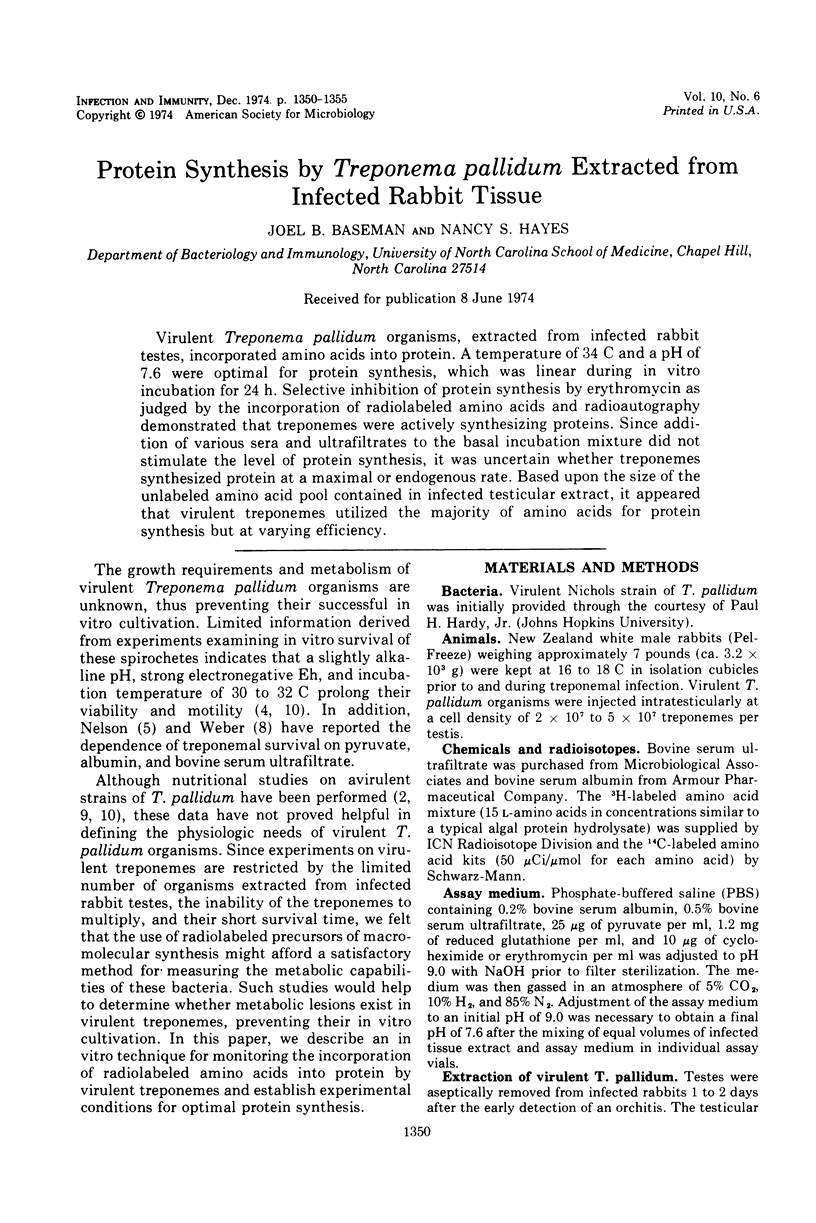
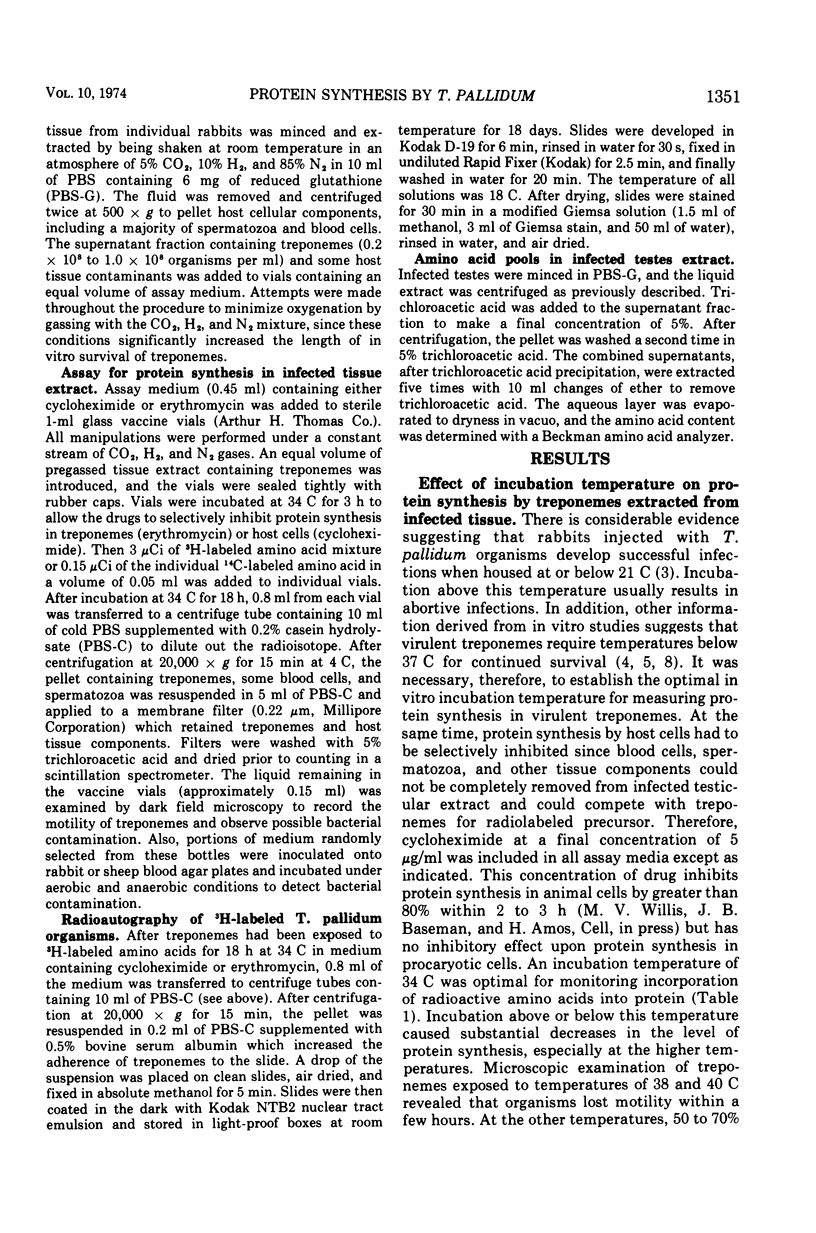
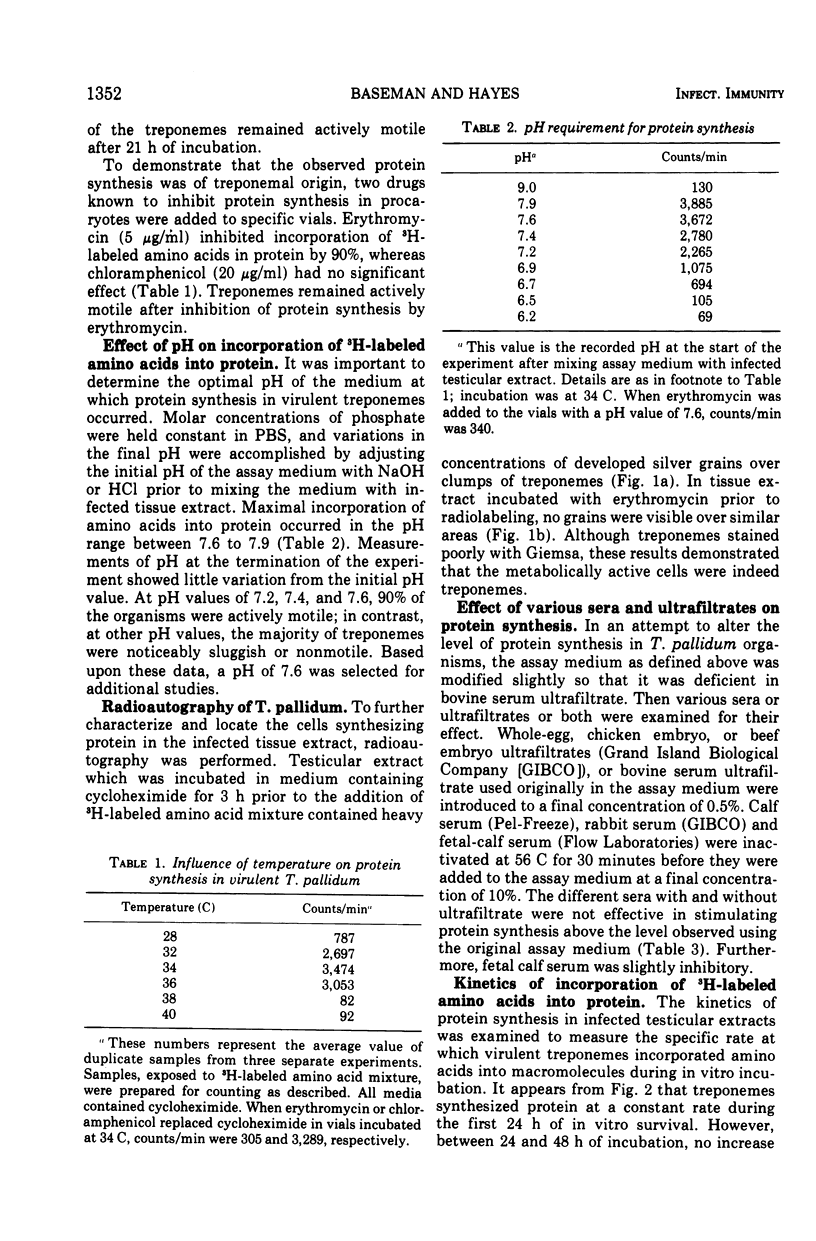
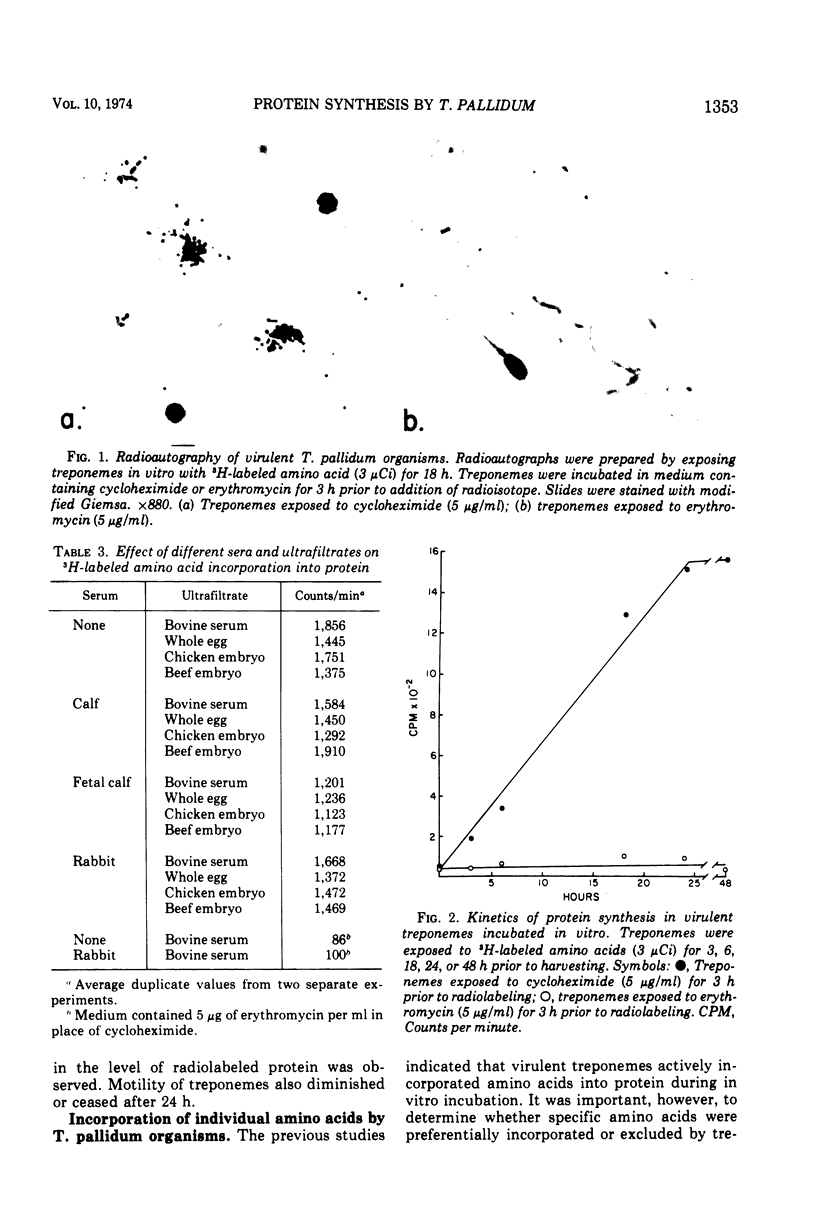
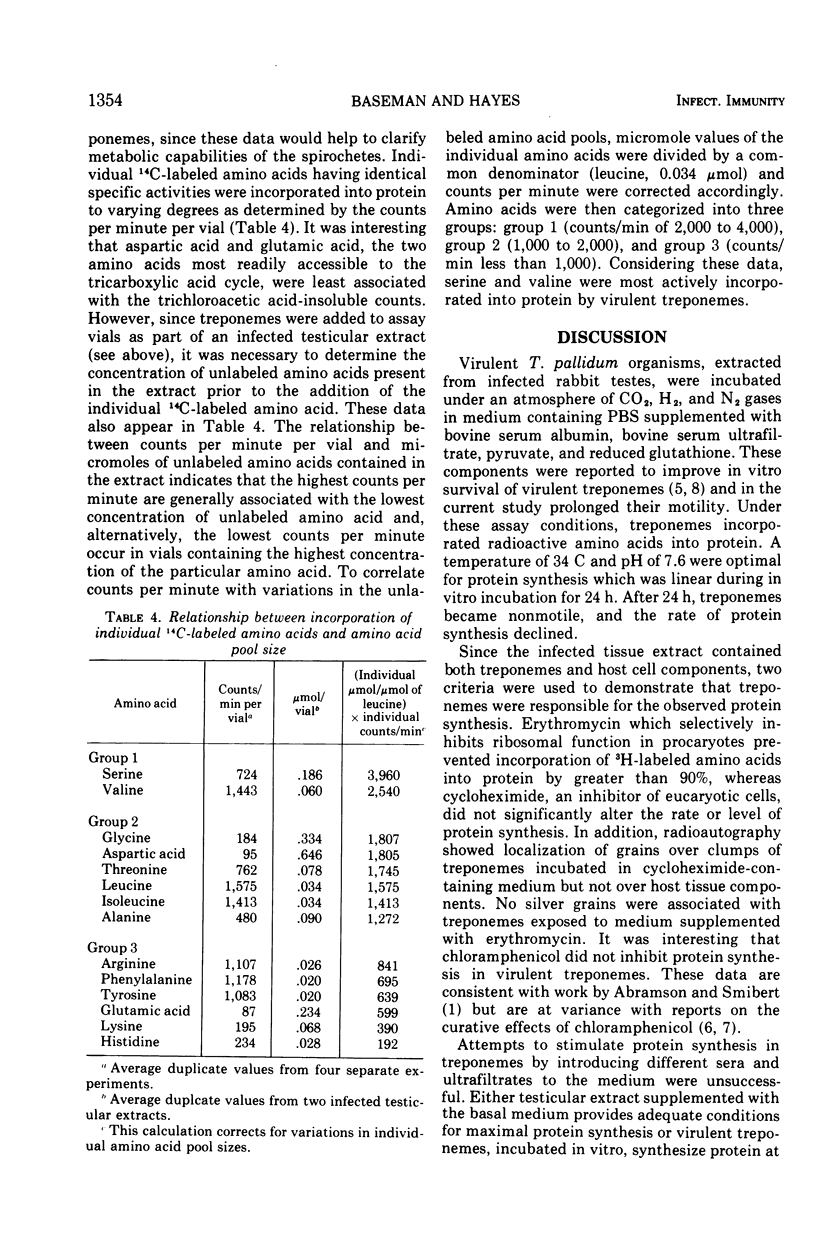
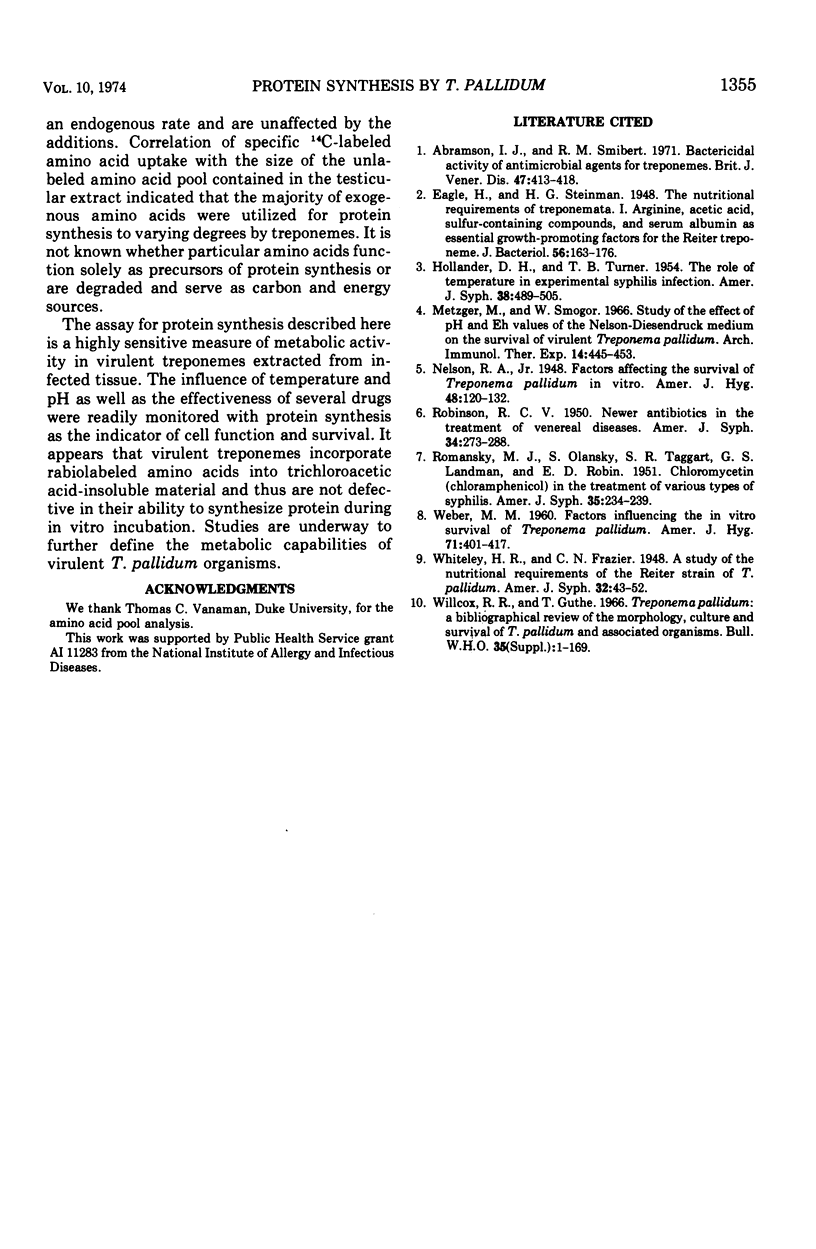
Images in this article
Selected References
These references are in PubMed. This may not be the complete list of references from this article.
- Abramson I. J., Smibert R. M. Bactericidal activity of antimicrobial agents for treponemes. Br J Vener Dis. 1971 Dec;47(6):413–418. doi: 10.1136/sti.47.6.413. [DOI] [PMC free article] [PubMed] [Google Scholar]
- Eagle H., Steinman H. G. The Nutritional Requirements of Treponemata: I. Arginine, Acetic Acid, Sulfur-containing Compounds, and Serum Albumin as Essential Growth-promoting Factors for the Reiter Treponeme. J Bacteriol. 1948 Aug;56(2):163–176. [PMC free article] [PubMed] [Google Scholar]
- HOLLANDER D. H., TURNER T. B. The role of temperature in experimental treponemal infection. Am J Syph Gonorrhea Vener Dis. 1954 Nov;38(6):489–505. [PubMed] [Google Scholar]
- Metzger M., Smogór W. Study of the effect of pH and Eh values of the Nelson-Diesendruck medium on the survival of virulent Treponema pallidum. Arch Immunol Ther Exp (Warsz) 1966;14(4):445–453. [PubMed] [Google Scholar]
- ROBINSON R. C. V. Newer antibiotics in the treatment of venereal diseases. Am J Syph Gonorrhea Vener Dis. 1950 May;34(3):273–288. [PubMed] [Google Scholar]
- ROMANSKY M. J., OLANSKY S., TAGGART S. R., LANDMAN G. S., ROBIN E. D. Chloromycetin (chloramphenicol) in the treatment of various types of syphilis; a preliminary follow-up. Am J Syph Gonorrhea Vener Dis. 1951 May;35(3):234–239. [PubMed] [Google Scholar]
- WEBER M. M. Factors influencing the in vitro survival of Treponema pallidum. Am J Hyg. 1960 May;71:401–417. doi: 10.1093/oxfordjournals.aje.a120123. [DOI] [PubMed] [Google Scholar]
- Willcox R. R., Guthe T. Treponema pallidum. A bibliographical review of the morphology, culture and survival of T. pallidum and associated organisms. Bull World Health Organ. 1966;35:1–169. [PMC free article] [PubMed] [Google Scholar]



